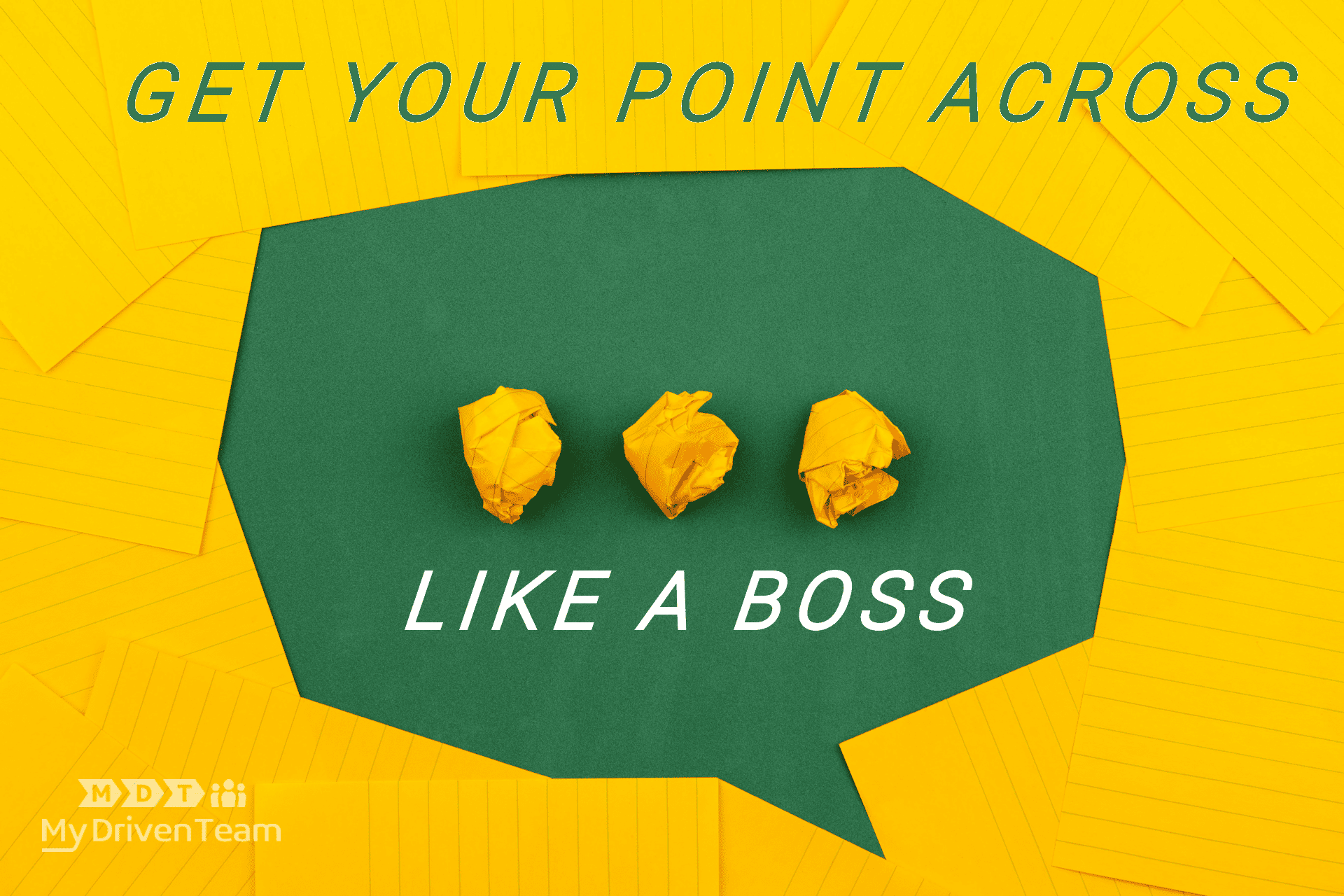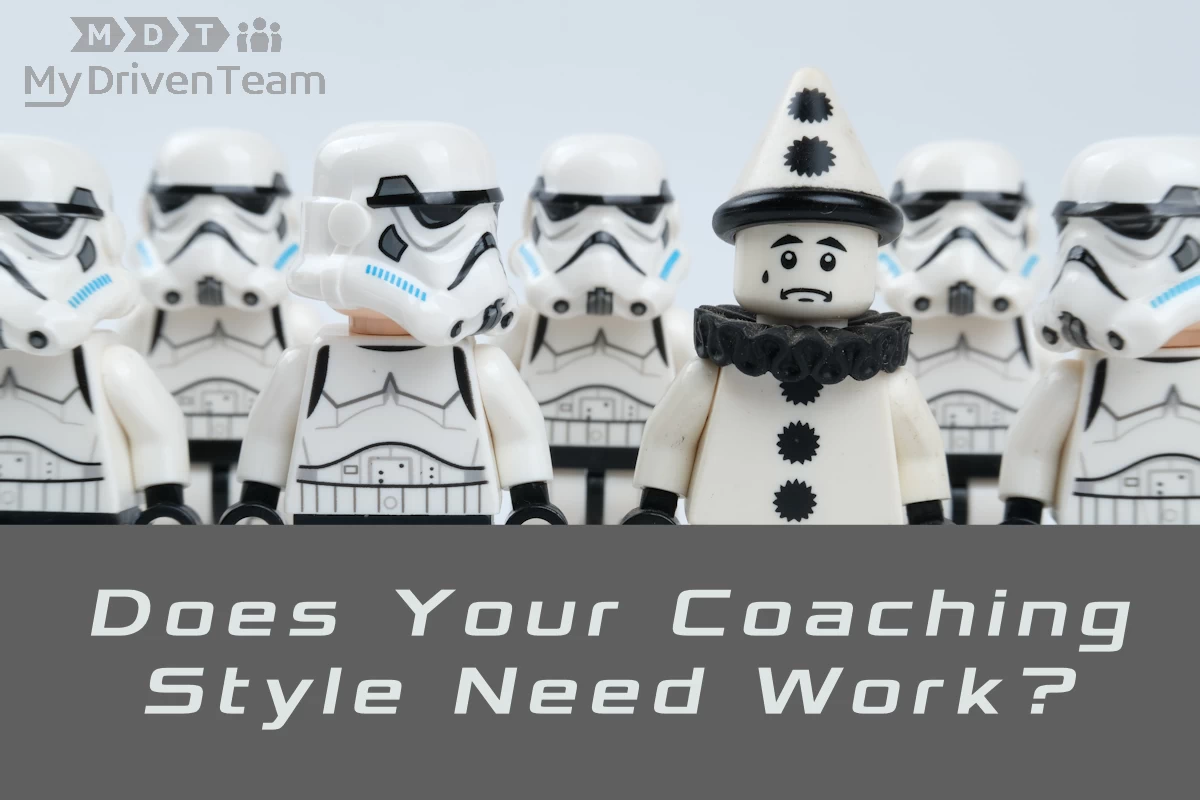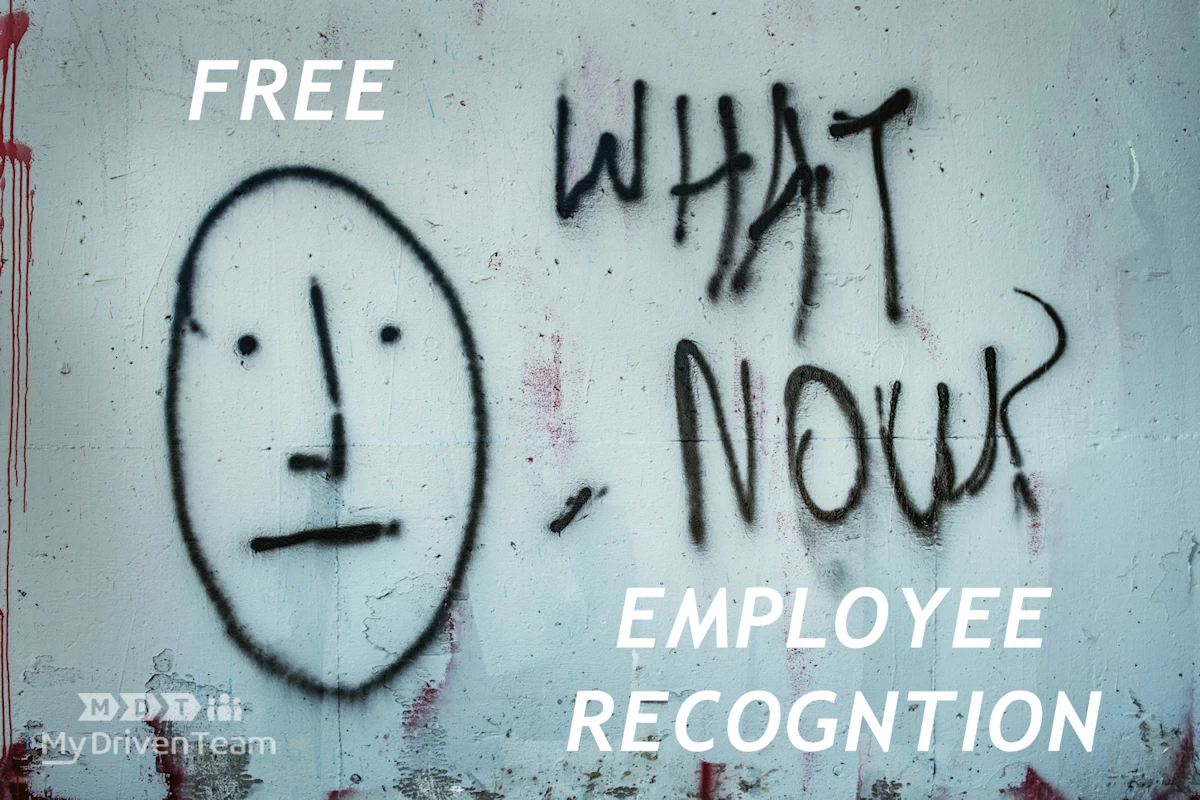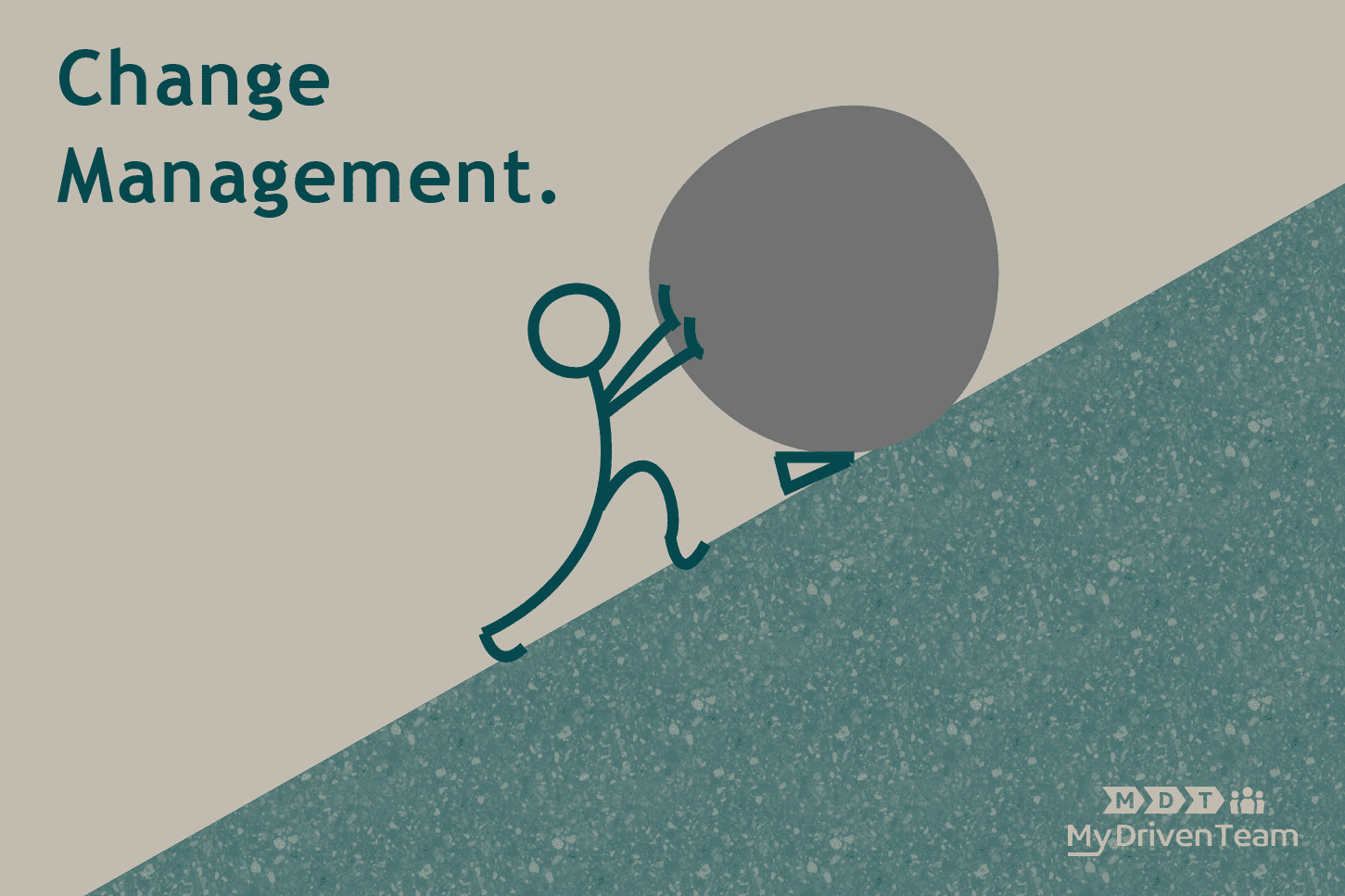
Change is a fact of life. Yet, we also know that when we try to force or resist change, it pushes back! So, naturally we as humans, have invested a great deal of time in exploring the idea of managing that force (change management). As a professional “change agent”, I’ve used many different types of change management styles that have led the way to victory. There are also plenty of times that I’ve marched along with teams to the sting of defeat. It’s that second one that has me continuing to research and experiment in order to find the secret sauce of change management. So what’s the sauce made of? Read on…
First off, it’s very difficult to separate personal change and organizational change. They go hand in hand because businesses are led by humans (at least for now). For individual or personal change management, there is only one rule…keeping a positive emotional state and mindset will help make the transition easier. That said, there are three main areas of personal change management to consider:
- Mindset / thought patterns and the emotions tied to them
- People
- Environment
For organizations, change takes on a different context due to the team dynamics and politics involved. In most cases, we are trying to direct change towards a certain outcome. For this situation, there are three main types of organizational change management to consider:
- Developmental
- Transitional
- Transformational
Each of these have different levers to pull so that we can apply the correct amount of effort for planning, communicating, executing, managing resistance, and maintaining the new state (so that we don’t slip backwards).
Personal Change Management:
How we react to change has everything to do with the way in which that change happens to us and the mindset & emotions we keep towards the people involved in the situation at hand.
Much like anger, resistance to change can be the same way. If the change at hand is inevitable, finding a way to let go of the resistance can reduce the stress of the situation.
In either setting, change is such a personal thing. Because of this, it’s good to be reminded of the natural emotions that someone can experience so that you can recognize and react accordingly. Just keep in mind that each of these emotions are influenced by not only the change itself, but also by many other factors (sleep, exercise, relationships, food, etc):
| Anxiety Happiness Threat Fear Anger Guilt |
Despair Hostility Acceptance Moving Forward Denial Disillusionment |
Strategies to manage mindset / thought patterns, and emotions tied to change:
- Recognize that change is always happening around you (let go of the idea that change has to be difficult or bad)
- Take time to identify negative emotions that might be tied to new behaviors, people, or objectives
- Visualize and practice positive thoughts and emotions around these items (meditation is great for this)
- Set up systems (and relationships) that positively reinforce these thoughts and feelings
Strategies to manage the people involved in the change:
- Consider all of the people involved in the change
- Are you reacting negatively to specific triggers from a specific person?
- Identify those triggers and address them (that usually means adjusting your own reaction to the trigger)
- Talk one-on-one with someone that you are having conflict with; search for a peaceful resolution
- As a last resort…remove yourself from the situation if you are unable to accept it
“Holding onto anger is like drinking poison and expecting the other person to die.“
Buddha
Strategies to manage the change environment:
- Consider your own personality type (use MBTI or DISC profile to help understand your reaction)
- Consider the introduction to the change (was this in a public or private setting? Who introduced it and how?)
- Try to see the change from a different perspective in order to change your paradigm
- Take a step back and look at your physical environment; identify any specific things that are making it harder on you
- Talk with the people involved to look for any way to make the transition easier
Whether you are the person experiencing change or you are trying to understand the person involved, it’s important to consider the whole environment. Most people have family, friends, and other activities that can cause stress. We are complex human beings! If you recognize that you or someone else is under an extreme amount of stress, be sure to take the time to explore stress management techniques or even seek professional help as needed.
The Overlap Between Personal and Organizational Change – Know Your Zones
The zones described below are really just a way for a person to get perspective from a change management lens. All too often, people get stuck in how they see their position on a team and have a hard time grasping their ability to navigate policies, procedures, and other’s behavior. Using this for yourself or as a teaching tool for someone that feels stuck, has been very useful in my experience.
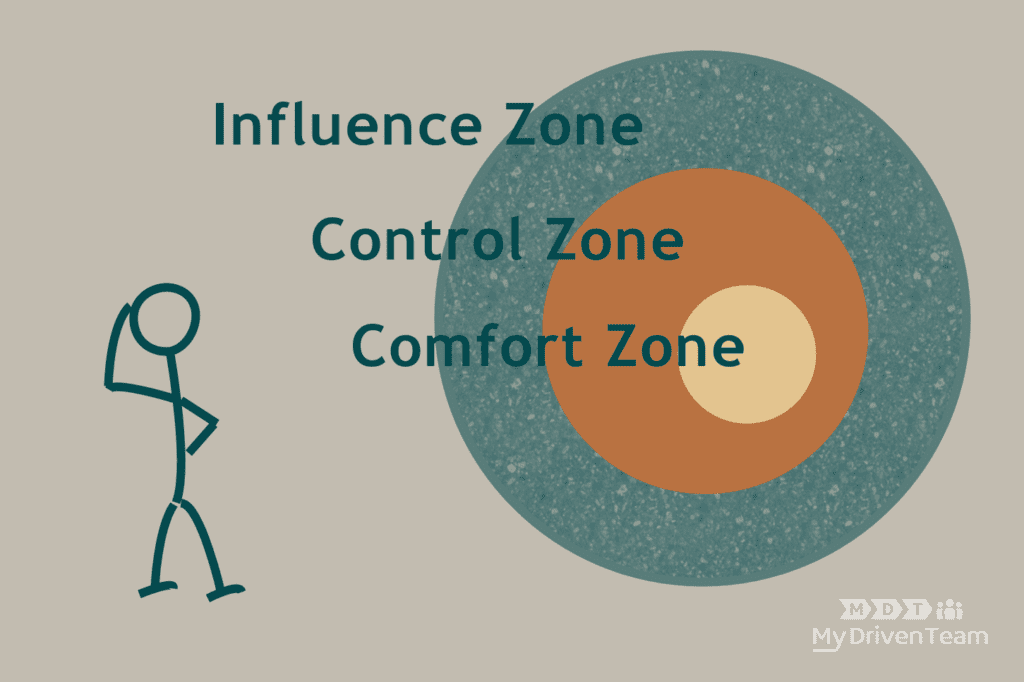
Comfort Zone:
From an organizational perspective, the “comfort zone” is where most people tend to stay. They are comfortable with the rules and behaviors they’ve witnessed working well, so they try not to push the boundaries because of the perceived risk. From what I’ve seen, getting someone to extend past their own comfort zone is the first step in seeing real change.
Control Zone:
The “control zone” encompasses the absolute limits to your position in an organization, as they have been defined. Of course many organizations don’t define them well, which is an entirely different issue. Assuming these are relatively defined, most people don’t exercise their full control. The reason for this is twofold…first, there may be emotional consequences to using their full power (someone else may get their feelings hurt). Second, since they don’t use this power very often, it can be uncomfortable and plain old scary.
The fact of the matter here is that getting a person to at least identify what their control zone is can be eye opening. This allows for a better understanding of the benefits and consequences to using the full extents of this zone, which can often uncover options that were not obvious prior.
Influence Zone:
The influence zone is the one that is most often ignored, from my experience. When people feel powerless over a situation or circumstance, they often throw their hands up in the air and just embrace frustration. However, the influence zone is the space where creativity can move mountains. I like to think of this space as boundless. Do you have the ability to influence the CEO of your company? YES! That doesn’t mean it’s worth the effort and you should…it just means that you can. If you think this way, you remove the limits from your possible outcomes.
It’s also important to think of change as a trajectory versus a binary outcome. Change is almost never a on or off switch. Instead, it’s like a boat in the ocean. You can often influence the trajectory of that boat by 1 or 2 degrees with relative ease. However, trying to get that boat to make a full left turn takes a entirely different amount of energy and approach.
Organizational Change Management:
To start, let’s be clear that change in an organization ca really broken into three categories:
Evolution: Change that happens over time in smaller increments. Think of this as “natural” change. Whether it’s people leaving at a normal rate, systems being replaced, or processes changing due to a change in inputs. This often goes almost unnoticed so it doesn’t require an enormous amount of energy to manage.
Revolution: This is a change that boils up from the bottom. This typically includes some kind of pain point from the people on the front lines. As you can imagine, this is often a messy process. Think of a manufacturing shop going from non-union to union. This can take a lot of energy to manage and is very situational. We won’t spend much time on this topic.
Directed: This final category is the one we’ll focus on the most. Every year, many organization set out to “direct” a particular change in order to improve their business outcomes. They will direct energy, dollars, and time towards this desired change and outcome. More often than not, they will fail in achieving their full desired outcome, but will succeed in some part or parts of it.
Now that we’ve identified “Directed Change Management” as an approach, we can break this down even further into sub-categories. It’s important that the directed change approach deals with all three of these categories:
- Developmental – Developing the skills, methods, and processes for continuous improvement.
- Transformational – Dramatically changing the purpose, process, or people in an organization.
- Transitional – This is a temporary change state that acts a a bridge to the ultimate target state.
As I’ve researched different types of Directed Change Management, I’ve uncovered many options. All of which have their spin on what works. While I’m hesitant to do so, I feel obliged to share a list of the top 15 options I found. I will also give my basic analysis and share a simplified approach (the MDT approach):
- Kotter’s Theory – 8 step process that moves from urgency to permanent culture change.
- Lewin’s Change Model – Simple 3 phase approach (unfreeze process, make change, refreeze)
- GE’s Change Acceleration Process (CAP) – Comprehensive high-level approach to make & sustain change.
- The McKinsey 7-S Model – Breaks change into hard & soft elements to get clarity on the change elements / process.
- Nudge Theory – Focuses on making change a choice and removing obstacles to make it easier for adoption.
- Kübler-Ross Change Curve – Expands on the elements of grief to help manage people’s reaction to change
- Satir Change Model – Expands on Kübler-Ross; helps identify how people are performing in each stage
- PDCA Cycle – Focuses less on people; uses a simple system similar to the scientific method. Plan, Do, Check, Adjust.
- Prosci-ADKAR Model – Uses planning across an organization to emphasize the impact of communication & training.
- Bridges’ Transition Model – Focuses on using transitional change to give employees a feeling of choice in lie of loss.
- Kaizen Model – Collaborative & experimental. Define the problem & let people find solutions. Learn from failures.
- Lamarsh Model – Simple but broad approach. Goes from start to sustain. Adds risk identification as a critical step.
- John Fisher Change Model – Focuses on how to handle people’s emotional experience during change.
- Maurer’s 3 Levels of Resistance & Change Model – Targets resistance at it’s core; works to counteract and overcome.
- MDT Method (MyDrivenTeam) – 3 step combination approach using Kaizen, PDCA, and Kübler-Ross curve.
Here’s a link that goes a bit more in depth on 13 of the 15 listed here: https://www.apty.io/blog/organizational-change-management-models
Before moving on from that massive list, I did uncover what I consider to be another great resource on this topic. The article that I will cite below and link to is an in-depth analysis of many different types of change management and how they apply to “Industry 4.0”. According to Epicor (a leading industry specific software provider),
“Industry 4.0 refers to a new phase in the Industrial Revolution that focuses heavily on interconnectivity, automation, machine learning, and real-time data.”
https://www.epicor.com/en-us/resource-center/articles/what-is-industry-4-0/
Not only did these researchers dive deep into many of the types of change management on the list above, they also contrasted them so that you could see what was common and missing among them. Here is a great table contrasting four of the top change management models:
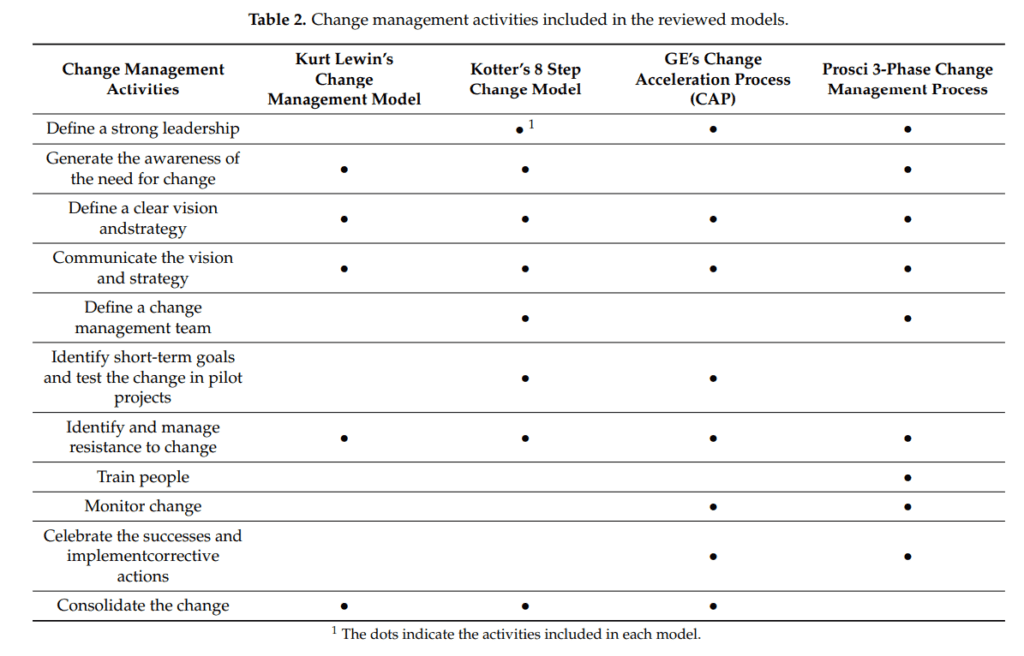
The MDT Method:
This method is one of my own crafting. It’s based on my own personal training, research & experience. In most ways, I’ve attempted to keep it simple, but I’ve also focused on making sure it’s comprehensive so that I can reduce risk when I step into new situations. Here are the basic categories and steps:
- Purpose:
- Identify the problem that needs to be solved
- Identify the target state
- Make a clear link to the work that needs to be done and the value for the people involved (use A3 to help with this process; see tools below)
- Process:
- Break the problem into solvable pieces
- Unsolvable problems should be brainstormed for actions or if left unresolved consider changing the target state
- Create a plan to address issues (be sure to include Leadership Controls and Metrics; see example tools below)
- Look for pilot projects that can help reduce risk and increase the speed of implementation
- Follow up on the plan to completion with time sensitivity / accountability built-in with dashboards and action plans (identify non-critical steps and kill them)
- Break the problem into solvable pieces
- People:
- Engage the minds of the people involved as much as time permits through-out the entire process
- Be aware of and manage the personality styles, emotions, and resistance levels of everyone involved (especially Leaders; see example tools / links below)
- Be willing to adjust the plan or the target as you learn of new obstacles
- Be cautious of under-estimating the amount of time it will take to implement & sustain (which will add stress to the people involved)
- Look for small wins in order to add momentum (celebrate whenever you can)
In order to further support the MDT Method, there are 3 categories to consider when planning a change event or strategy:
Management Infrastructure: This is really focusing on the Leadership side of things. Do we have the Management Team in place. Is the Leadership structure clear? Do we have defined roles and responsibilities? Do we have controls and metrics in place for accountability and strategy adjustment?
Tools & Techniques: This area is more cut and dry. Do our systems support the initiative? Do we have the right tools in place for making and sustaining the change? Can we improve them? Are there any deal breakers here?
Mindsets & Behaviors: This is what I consider the cultural aspect. People bring and learn behaviors as they enter an organization. Are any of these behaviors impeding our ability to change? If so, what is the plan to address them? What about the mindset of the people involved? Are they resistant to the change? Why and what can we do to address this?
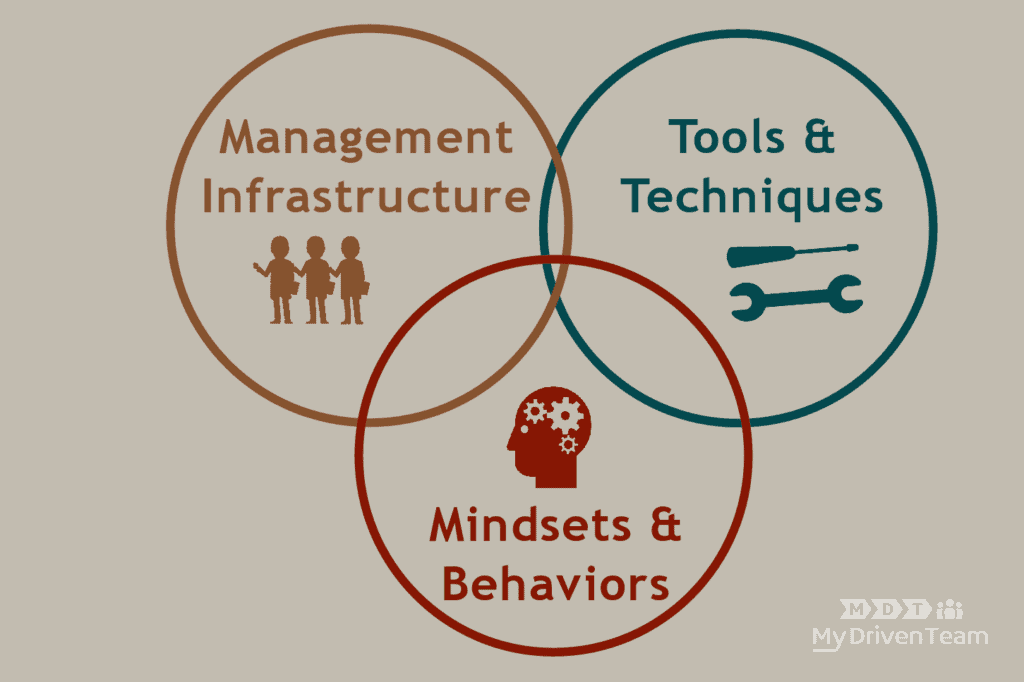
The one ingredient that most often causes failure…time.
It took me a while to understand how important time is when it comes to change management. People involved in a change process almost always have a full-time job and are just barely keeping up. That means that any time we ask them to make a change, they must sacrifice time towards those actions in order to do so. This goes for top level Leaders all the way to front line employees.
Because of this, it’s imperative to emphasize the time factor in change management. Most often Leaders will cut time short in the areas of planning which will show up in a lack of communication and follow-up. This can lead to loss of momentum and ultimately failure if not corrected. So, not getting or giving enough time can be a deal breaker all on its own.
Change Management Types Summary:
Whatever change management method you take, know that this road has been traveled many times before. You are not alone and no path is going to be exactly the same. In my experience rigidity and success are not often friends. Staying committed but flexible, treating people with respect, and knowing when to ask for help are the keys to success.
Change Management Tools (What MDT uses):
Purpose:
- A3 (Japanese style one pager to help summarize most of the steps in the change process) – https://docs.google.com/spreadsheets/d/1Z-UUmgCyeQsSdNEg7kVRW8qqq4Kx_oMmcmlKJAp7W68/edit?usp=sharing
Process:
- Action Plan (use to clarify steps and accountability / follow up) – https://docs.google.com/spreadsheets/d/12JaYdm3-ulAWX4m03aqYyKUunHwwH20CQCtCYDSEIHk/edit?usp=sharing
- Dashboard (monitoring metrics) – https://docs.google.com/spreadsheets/d/1p3dB06L_smVX2FRUeIMDrVa798S1tQ9tSEOPswe_LD4/edit?usp=sharing
- Example Process Checklist / audit – https://docs.google.com/spreadsheets/d/13Jb7RQuIHgSfMT9uU7F1-jbc1bY1PnjjqUVLNPBZrOY/edit?usp=sharing
People:
- Personality Profiles – https://www.truity.com/
- Kübler-Ross Change Curve – https://www.ekrfoundation.org/5-stages-of-grief/change-curve/

